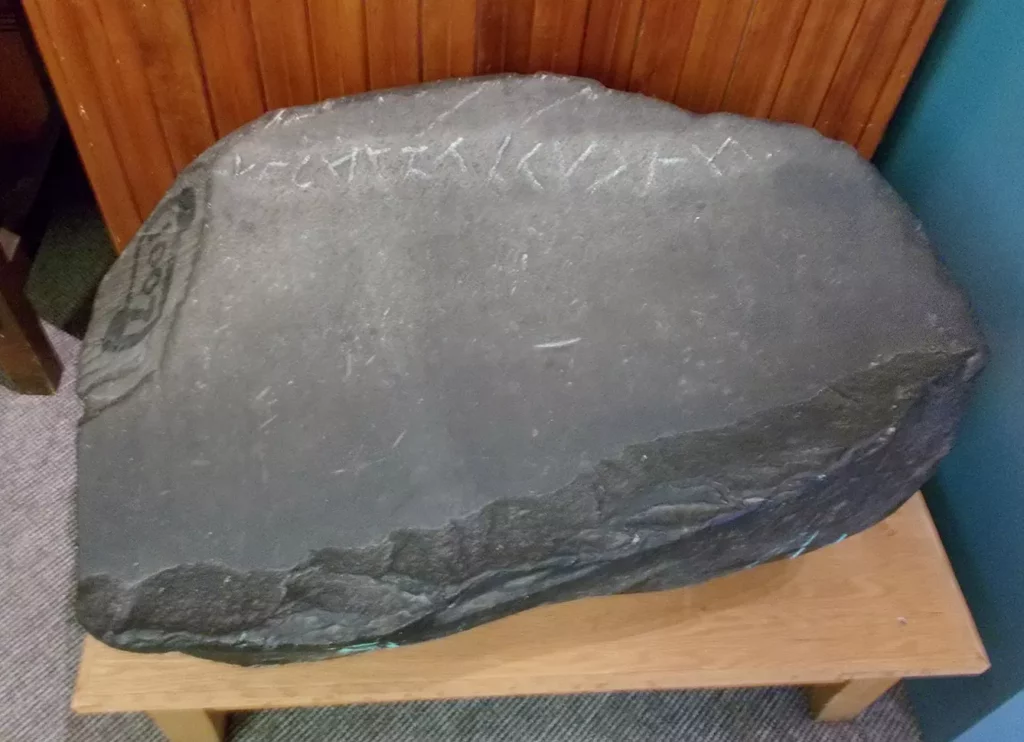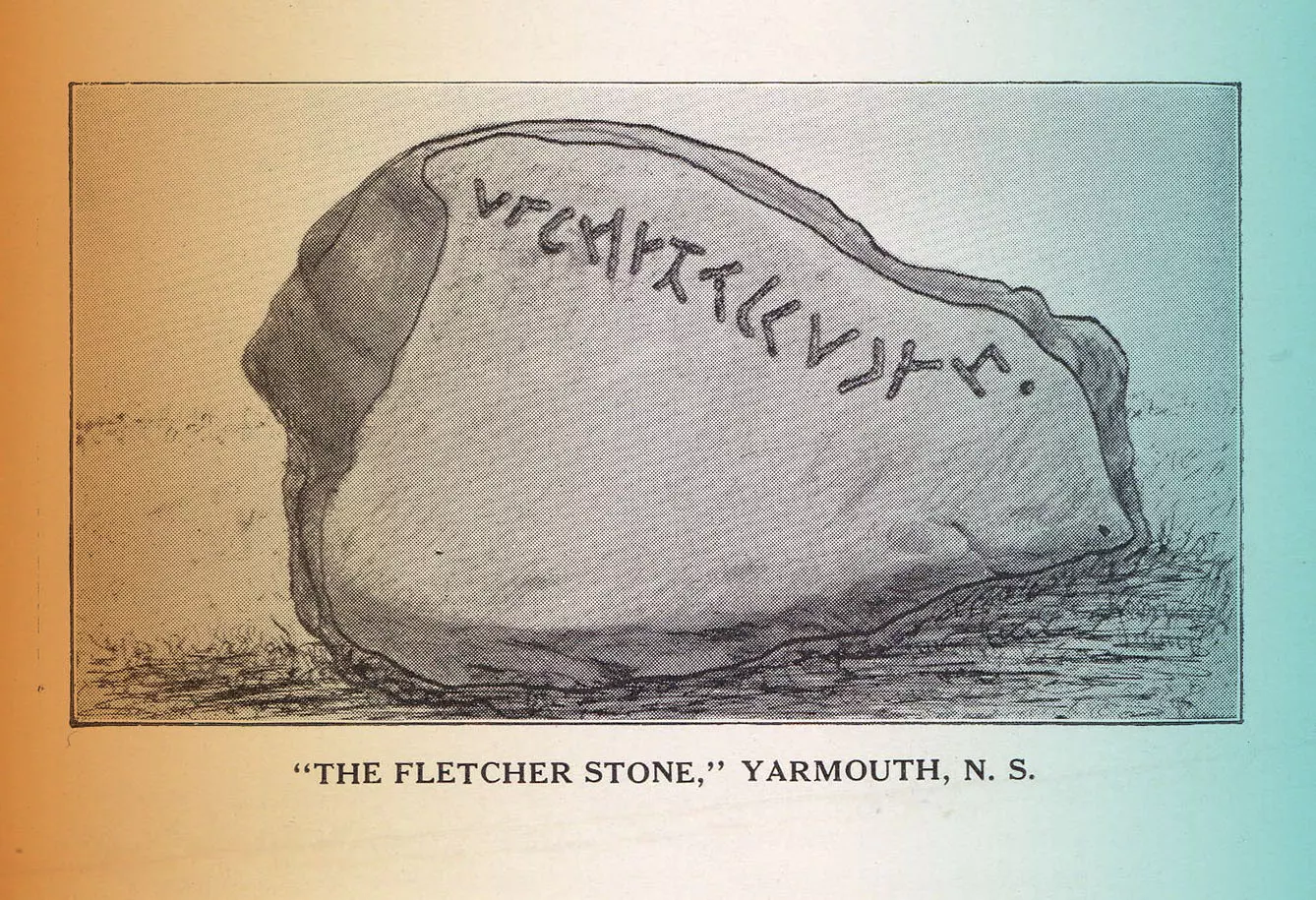Richard Fletcher, a surgeon in the British Army, retired to Yarmouth, Nova Scotia, for the understandable reason of its magnificent landscape. It was the first decade of the 19th century, and the area was still wild. He purchased a plot of land near the harbor, not far from a salt marsh created when the nearby Salt Pond had been dyked off. It was on his land near the marsh where he made a fascinating discovery.
Were letters on Yarmouth Stone… Hungarian runes?
In 1812, Fletcher happened upon a quartzite slab with a mysterious inscription, which remained a mystery for many decades to come. Fletcher announced his finding to the public, and then after his death some years later, the stone was transferred to the Yarmouth Public Library and finally on to the Yarmouth County Museum. Finally, in the late 19th century, the slab started to gain scientific attention.
It was at this point that the inscription was identified as runic. Now it widely serves as proof of European presence in America before Columbus. Even so, the inscription’s meaning remains a secret, with numerous theories. One of them is that these are Hungarian words in a foreign alphabet.

The 200-kilogram stone has a line of 16 runes, some more legible than others. The symbols were attributed to several civilizations of the Old World – Vikings, Basques, Japanese, and Greek, with some researchers claiming that different letters came from different groups.
Then in 1935, Frank Kovatch put forth another theory in the Hungarian Scientific Bulletin. In his understanding, the letters were Transylvanian runes, and he hypothesized that the language was a mix of Uyghur, Scythian, and Native American. Kovatch pointed out the established fact that Vikings explored America under Lief Ericson in 992.
Erikson and his fellows
Per their chronicles, a member of their expedition team was a foreigner (to the Vikings) named Tyrkir, who is considered to be Turk. The cultural influence there is possible, as Varangians, aka Vikings, could sail from the North all the way to the Black Sea. Per the newspaper “Magyarsag” (“Hungarian”), in 1996, a woman named Maria Rabl managed to decipher the runes, claiming that, read from right to left, the text says, “(Erik)son walked this place along with many of his fellows.”
Was this Turik-proto-Hungarian the author of the inscription? That’s as possible as any other hypothesis about the Yarmouth stone. As long, of course, as the whole inscribed-slab discovery is not a giant forgery. This is, of course, another possibility.







